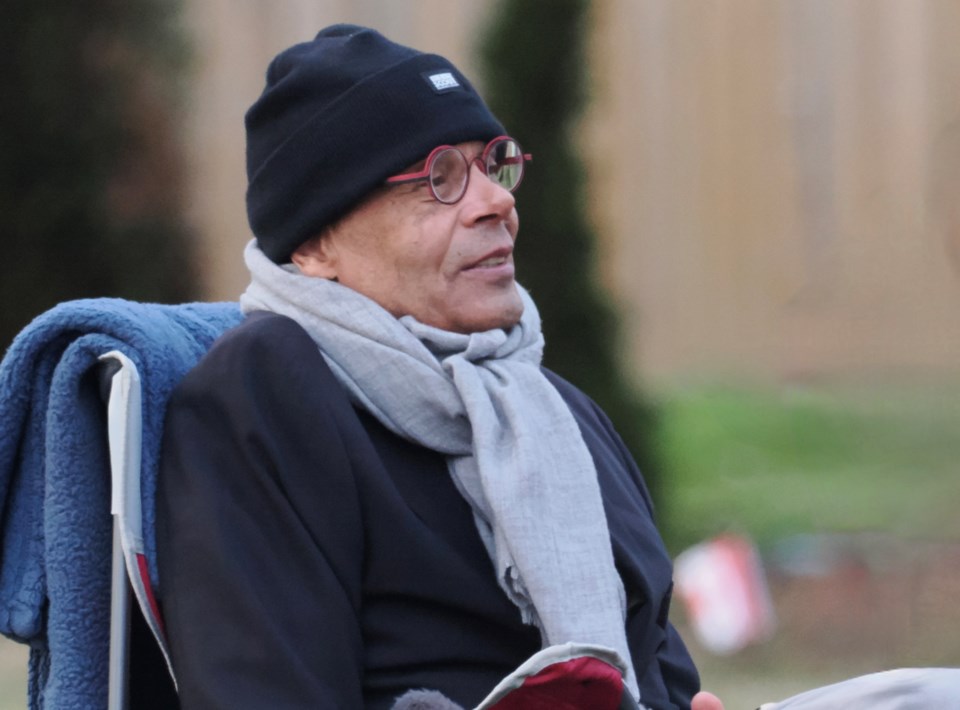First, a recap of James Russell, the former journalist who came to town one day and saw a wrong he needed to right, and what he has done since.
When he first arrived in town on business, he came across a small green grassy patch with a blue historic marker proclaiming it a cemetery of Black people. The plaque explained this town was where the first ant-slavery legislation in the British Empire was introduced, and says “a long tradition of tolerance attracted refugee slaves to Niagara, many of whom lie buried here.”
This plaque, dating the cemetery from the 1830s, and located in a highly visible spot near a busy intersection, had not received much attention other than grass-cutting by the town, owner of the property, and as some report, the theft of some of the tombstones.
However, that lack of interest was about to change. When Russell came back years later he had decided it was time to investigate who was buried beneath that patch of grass, and give them back their names.
He received permission to operate ground-penetrating radar, which he paid for himself, and when it revealed there were likely 28 graves and 19 buried headstones in the historic cemetery, he embarked on a mission to unearth and restore those stones as a step toward discovering who is buried at the site, thus giving them the dignity they deserve in death.
This newspaper and other media outlets, including TV news cameras, have followed his progress, which was fuelled by his own passion and commitment to his cause. That put him at odds with the town — although he began by working with town staff, he became impatient, and what had been a project endorsed by others became a one-man charge, a man frustrated by the many rules and regulations from the Bereavement Association of Ontario and the province that legislates cemeteries. Those are rules the town must follow, and we know government works slowly. He wasn’t going to wait.
He also walked away from a town committee that was formed to fundraise for this and other inactive cemeteries, saying it was the town’s responsibility to fund what needed to be done. It seemed a shame they couldn’t all work together, with similar goals, although the end game for the town is not certain.
Russell’s impatience, and a desire to tell his story to a larger audience, led to a hunger strike that we reported to have lasted about 30 hours. Next came a protest march that did not attract the kind of attention Russell had hoped for.
The Local learned recently that Russell’s hunger strike was not what we and others in the media reported it to be. He admitted to spending some time warming up in his car during the one night he was apparently chained to that historic blue marker, and when he indeed became hungry, as one is expected to during a hunger strike, he visited Tim Hortons for sustenance.
While this may cloud any further attempts to continue his efforts in Niagara-on-the-Lake, his cause should not be forgotten. He has done the town an important service by bringing the neglect of this historic cemetery to our attention. Although there are other inactive cemeteries in town, this is a significant representation of early Black history and community, and if and when the stones are restored, will help add to our knowledge of early Black history, and tell the story of some of those who escaped slavery to find a save haven in Niagara.
The town is soon to release an archaeological report that Russell instigated. It will be based on research that only came about because he fought for those buried in the cemetery to be given back their identity. Whatever discussions that ensue about what is to follow are only occurring because he initiated this project.
Without his intervention, NOTL residents and visitors would have continued to pass by that grassy patch without a moment of thought for the freedom-seekers who crossed the river to a land where they hoped and expected to find tolerance, where they lived out the remainder of their lives, died, and were buried. Hopefully one day their headstones will be unearthed, cleaned and restored, so that we may know who they are.
We can’t condone Russell’s actions, but we recognize he has been fighting for something he is passionate about, acknowledge what he has accomplished, and hope the job he started will be finished.



